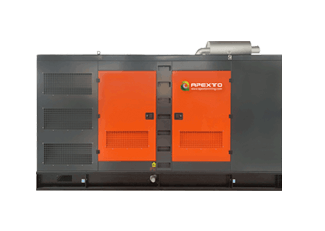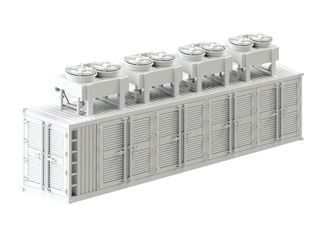ASIC miners’ performance is shaped by multiple interdependent factors, ranging from hardware design and algorithm compatibility to operational environments and market dynamics. Below is a detailed analysis of key influencing elements:
- Manufacturing Node: Smaller nanometer-scale processes (e.g., 7nm, 5nm) enable higher transistor density, leading to stronger computing power at lower energy consumption. For example, a 5nm ASIC miner can achieve a 30–50% improvement in energy efficiency compared to a 16nm model.
- Cooling System: High-density chips generate significant heat. Advanced cooling solutions (e.g., multi-fan setups, heatpipe cooling) prevent thermal throttling, ensuring stable hash rate output.
- The total count of ASIC chips in a miner directly determines its hash rate. For instance, a model with 30 custom chips may offer 100 TH/s, while upgrading to 40 chips could increase Hash (hash rate) to over 130 TH/s.
- Power Efficiency: High-quality power supplies (conversion efficiency ≥90%) reduce energy loss and operational costs.
- Energy Efficiency Ratio: A lower J/TH value (e.g., 20 J/TH vs. 50 J/TH) means less power consumption per unit of computing power, resulting in a 60% annual energy cost reduction for the same hash rate.
- ASIC miners are designed for specific algorithms (e.g., SHA-256 for Bitcoin, Scrypt for Litecoin). Mismatched algorithms render the miner useless; for example, a Bitcoin miner cannot mine Ethereum (Ethash algorithm).
- Manufacturers optimize hash rate allocation and power consumption through firmware upgrades. For example, a firmware update might increase hash rate by 5–8% and reduce energy efficiency ratio by 10%.
- Outdated firmware may contain vulnerabilities, causing hash rate fluctuations or security risks (e.g., hijacking by malicious programs).
- High Temperature: When ambient temperature exceeds 35°C, miners may trigger thermal protection, reducing hash rate by 10–20%. Prolonged high temperatures accelerate component aging.
- Humidity Risks: Humidity >80% may cause circuit board short-circuits, while <20% increases static electricity risks, destabilizing chip performance.
- Miners require real-time communication with mining pools. High latency (>100 ms) or disconnections lead to failed hash submissions and reduced rewards. Wired networks (gigabit bandwidth) with backup connections are recommended.
- Dust accumulation blocks cooling vents, reducing heat dissipation efficiency and causing hash rate degradation. Regular cleaning (every 1–2 months) of fans and heat sinks is essential.
- Unrepaired hardware failures (e.g., faulty fans, chip solder issues) may cause cascading damage.
- Rising global hash rate increases mining difficulty, reducing a single miner’s effective reward share. For example, Bitcoin’s network difficulty grows by ~40% annually, necessitating hardware upgrades to maintain profitability.
- High electricity prices (> $0.10/kWh) squeeze profit margins and may force miners to shut down. Older, less energy-efficient models are typically the first to become unprofitable during price hikes.
- Bans or restrictions on crypto mining in some countries (e.g., China, Algeria) directly impact operational viability. Relocating to compliant regions (e.g., North America, Kazakhstan) involves transportation costs and policy risks.
- Continuous upgrades (e.g., from 100 TH/s to 150 TH/s with 18 J/TH efficiency) render older models obsolete, shortening their effective profit cycles.
- Rapid technological changes lead to high depreciation rates (30–50% annually). A miner’s residual value may drop to 20–30% of its initial cost after 18 months.
- Short-Term: Optimize environment (temperature, humidity, network), update firmware promptly, and conduct regular maintenance.
- Mid-Term: Hedge against electricity cost fluctuations (e.g., miner+energy storage systems) and use hash rate leasing/futures to mitigate obsolescence risks.
- Long-Term: Track industry trends (e.g., advanced processes, liquid cooling) and plan hardware upgrades to sustain competitiveness.
By managing these factors holistically, miners can maximize performance output and return on investment.

 單人礦工
單人礦工
 比特幣
比特幣
 Dogecoin
Dogecoin
 Aleo
Aleo
 卡斯帕
卡斯帕
 ALPH
ALPH
 Nexa
Nexa
 ETC
ETC
 CKB
CKB
 衝刺
衝刺
 卡德納
卡德納














































